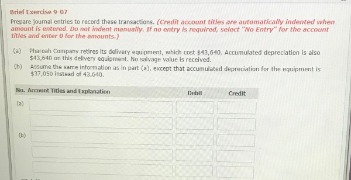
We’ve simplified the concepts and processes you need to understand in this quick guide. Prepare your cash flow statement last because it takes information from all of your other financial statements. Your statement of retained earnings is the second financial statement you prepare in your accounting cycle. Then, list out any expenses your company had during the period and subtract the expenses from your revenue. The bottom of your income statement will tell you whether you have a net income or loss for the period. Your income statement gives you insight into your company’s income and expenses.
Financial Statements: A guide for Small Business Owners
Cash flow from investing activities includes cash received from the sale of securities and cash paid to buy new assets like land and equipment, among other things. While there is a difference in the accounting standards between GAAP and IFRS, the purpose of each financial statement remains the same. I got a university degree to learn how financial statements work and how those numbers come together to give you a comprehensive financial picture.
For example, some investors might want stock repurchases, while others might prefer to see that money invested in long-term assets. A company’s debt level might be fine for one investor, while another might have concerns about the level of debt for the company. The statement time to reverse impairment losses on non of functional expenses reports expenses by entity function (often broken into administrative, program, or fundraising expenses). This information is distributed to the public to explain what proportion of company-wide expenditures are related directly to the nonprofit’s mission. There are additional line items in this section as well if you’re using the indirect method. You’ll need to subtract gains and add back losses on the sale of assets.

General Principles and Concepts in Financial Statement Preparation
Additionally, U.S. government agencies use a different set of financial reporting rules. This method allows for easy comparison of financial statements across different companies or time periods. Horizontal analysis, on the other hand, involves comparing financial statement items across multiple periods to identify changes and trends in a company’s financial performance.
Company
The FASB is a private organization responsible for establishing and maintaining accounting standards in the United States. It develops GAAP and ensures that these standards are regularly updated to reflect evolving business practices and economic conditions. Financial statement preparation is a crucial aspect of a company’s financial management, involving depreciation and amortization on the income statement the recording and reporting of its financial transactions and activities.
- These statements are the end product of the accounting system in any company.
- The income statement, or the statement of comprehensive income, summarizes a company’s revenues and expenses over a specified period.
- Shaun Conrad is a Certified Public Accountant and CPA exam expert with a passion for teaching.
- Monitoring the cash flow statement helps predict cash flow issues and prepare for them before they turn into a major problem.
- Sales transactions are posted to the sales ledger, credit sales are recorded in the accounts receivable ledger, and so on – you get the idea.
A qualified opinion suggests that there are specific issues or departures from accounting standards, but the financial statements are still fairly presented. Vertical analysis, also known as common-size analysis, involves expressing each item on a financial statement as a percentage of a base item, such as total assets or total revenues. Another way to maintain accurate financial statements is to choose your accounting conventions and stick to them. It can be extremely frustrating when trying to compare current performance to previous years only to be lost in the milieu of different categorisation methods or accounting methods. Because financial statements serve as a fundamental source of financial information, you’ll need to apply basic accounting principles to ensure accuracy and consistency.
The statement of stockholders’ equity, or the statement of changes in equity, shows the changes in the components of stockholders’ equity over a specified period. It includes elements such as common stock, preferred stock, additional paid-in capital, retained earnings, and treasury stock. Getting into the habit of reviewing financial statements and reports is essential and QuickBooks simplifies and streamlines this process to give you more time to focus on running your business. If you’ve made it this far, you’re ready to take the next step and incorporate financial statements into your workflow and processes. Not only will these statements help you better manage your business, but they will highlight areas in need of improvement and opportunities for growth.
An income statement shows a company’s revenues and expenses for a period of time. It provides information relating to returns on investments, risks, financial flexibility, and operation capabilities. Most companies produce a multi-step income statement, which documents how a firm produces net income. This statement will show you how cash has changed in your revenue, expense, asset, equity, and liability accounts during this accounting period. The first in the order of financial statements is the income statement. You need to prepare this first because it liquidation law gives you the necessary information to generate the other financial statements.
After the needed adjusting entries are completed, all the accounts are included in the adjusted trial balance. First, financial statements can be compared to prior periods to understand changes over time better. Financial statements can also be compared between competitors in the same industry to see the differences in their business operations and profits. By comparing financial statements to other companies, analysts can get a better sense of which companies are performing the best and which are lagging behind the rest of the industry. They provide insight into how a business generates revenues, what those revenues are, what the cost of doing business is, how efficiently it manages its cash, and what its assets and liabilities are. Although financial statements provide a wealth of information on a company, they do have limitations.
No comment